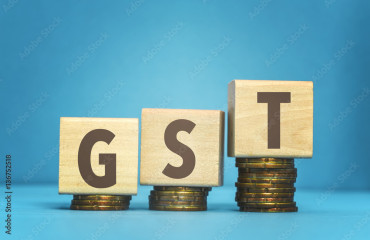
On 31 May, the Controller General of Accounts released the annual data for the accounts of India’s central government. As per this, in 2022-23, the government had collected corporate tax of ₹8.26 trillion, amounting to 3.03% of gross domestic product (GDP). The GDP is a measure of the economic size of a country during a given year.
On 31 May, the Controller General of Accounts released the annual data for the accounts of India's central government. As per this, in 2022-23, the government had collected corporate tax of ₹8.26 trillion, amounting to 3.03% of gross domestic product (GDP). The GDP is a measure of the economic size of a country during a given year.
In 2018-19, the year before the covid pandemic broke out, total corporate tax amounted to 3.51 % of GDP. There has been a fall in corporate tax collections over the last four years. Nonetheless, the gross tax revenue—or the total amount of tax collected by the central government—has gone up during that period.
In 2018-19, the gross tax revenue earned stood at 11.01% of GDP. In 2022-23, it jumped to 11.21%, despite the fall in corporate tax collections. This primarily happened on account of a jump in personal income tax collections, from 2.39% of GDP in 2018-19 to 2.97% during 2022-23. So, a fall in corporate tax was more than made up for by an increase in the personal income tax mop-up. Further, there was also a jump in collections of central goods and services tax (GST), from 2.42% of GDP in 2018-19 to 2.64% in 2022-23.
This change in the structure of the Centre's gross tax revenue has several important second-order effects. The jump in personal income tax has primarily happened because of higher effective tax rates being levied on those who make more money. This has possibly also led to an increase in the number of Indians renouncing their citizenship and moving to other countries. In an answer to a question raised in the Rajya Sabha in early April, the government said that the number stood at 134,561 individuals in 2018 and had jumped to 225,620 individuals in 2022.
Further, the total expenditure of the central government in 2018-19 had stood at 12.25% of GDP. In 2022-23, it was at 15.38%. This was primarily due to the government spending more in trying to counter the negative economic impact of the pandemic, pushing up the fiscal deficit—the difference between what a government earns and what is spends—from 3.44% of GDP to 6.36%.
If corporate tax collections hadn't fallen, the government could have possibly run a smaller fiscal deficit. If not that, the government could have run a similar fiscal deficit with lower taxes. It could have cut the GST on let's say two-wheelers to try and push up stagnating sales. Alternatively, it could have cut the central excise duty on petrol and diesel further, and put money directly in the hands of citizens.
But a financially tied government hasn't really been in a position to explore these options. Now the question is: how did we end up here? The answer lies in the cut in corporate tax rates carried out in September 2019. The idea, as the press release accompanying the announcement had put it, was to "promote growth and investment" and to "attract fresh investment in manufacturing". The hope was that as firms would make higher profits, they would invest more and expand their capacity.
Nonetheless, there was a fundamental problem here. As quite a few economic commentators had pointed out back then, it would have made more sense to put money directly in the hands of people and encourage them to consume more. As Reserve Bank of India's Report on Currency and Finance 2021-22, had pointed out: "Following a consumption-led brief boom during 2014-17, the economy eventually entered a phase of slowdown from 2017-18 onwards, with the GDP growth moderating for eight successive quarters before the onset of the COVID-19 pandemic." The point being that consumption had slowed down even before covid had struck. And only once companies saw consumption improve would they have an incentive to invest more and expand, given that ultimately whatever they produce needs to be consumed.
Now how do things look more than three-and-a-half years after the corporate tax cut? The share of manufacturing in the economy, both in real and nominal terms, has contracted between 2018-19 and 2022-23. Further, as economists Nikhil Gupta and Tanisha Ladha of Motilal Oswal estimate, in 2022-23, the share of the corporate sector in total investments fell to its lowest in 19 years. They suggest that "households were the key driver of investments" during the year.
This is not to say that the private sector is not investing. Private businesses are. Indeed, things are looking up slightly on this front. Nonetheless, at the same time, the entire idea that a cut in corporate tax rate would encourage the private sector to invest a lot more has come a cropper. The problem is mass private consumption, which should ultimately incentivize greater private investment, continues to remain weak.
But companies have benefited tremendously from the cut in tax rates. Along with this, falling interest rates between early 2020 and early 2022 also helped them enormously. The net sales of listed companies in 2022-23 was 42% more than in 2018-19. On the other hand, their net profit was 189% more. But the amount they paid towards corporate tax went up by just 30%. A similar trend can be seen in case of unlisted companies as well.
Clearly, the idea of cutting corporate tax to encourage investment in India has not really worked. What was basically a prognosis in 2019 has turned into an expected result in 2023.
